Verdict
The Samsung Galaxy Z Fold 5 can best be described as an iterative upgrade. Sure, it fixes long-time issues with the Fold series by getting rid of the gap and impressive software support, but it’s near-identical in most other areas, making the £100/$150 price hike a particularly hard pill to swallow.
Pros
- Large 7.6-inch foldable display
- Most powerful foldable phone around
- Better app support than other book-style foldables
Cons
- Very similar to the Samsung Galaxy Z Fold 4
- £100/$150 price increase
- Identical camera setup
-
Large internal displayThe Samsung Galaxy Z Fold 5’s 7.6-inch foldable display is ideal for bingeing movies and running apps in split-screen mode. -
IPX8 water resistanceThough unchanged compared to the Z Fold 4, the IPX8 water resistance is still among the best you’ll find on a foldable. -
Triple camera setupThe Z Fold 5’s combination of 50MP primary, 12MP ultrawide, and 10MP 3x zoom lenses offer a versatile shooting experience.
Introduction
Samsung’s 2023 book-style foldable is finally here, and Samsung has opted for an iterative upgrade yet again, following the trend of the Z Fold 4 and even Z Fold 3.
The catch is that the Z Fold 5 costs more than its predecessor at £1749/$1799, despite the minimal changes on offer.
Sure, the improvements like better performance and a gapless fold are welcome with open arms, but in a year where we’ve seen significant improvements to foldable tech from the likes of Google, Honor, Huawei, Oppo and Motorola, has Samsung done enough to keep its foldable crown?
I’ve spent over a week using Samsung’s new big-screen smartphone, and here’s what I think.
Design and build
- Near identical overall design
- No more foldable gap
- Marginally lighter and thinner
It’s a big year, not for the Samsung foldables in general, but for the hinge mechanism within. Since the launch of the first Galaxy Fold in 2019, there has been one consistent issue with Samsung’s foldables – the gap.
Due to the design of the teardrop hinge mechanism used by Samsung foldables, the phones were physically unable to close completely, leaving an odd triangular-shaped gap when folded. It wasn’t ideal for foldables with intricate systems that could be destroyed by dust and debris.
Thankfully, Samsung has finally solved the issue, with the Z Fold 5 and the clamshell-style Z Flip 5 closing without any hint of a gap. It’s just a little surprising that it took so long, especially considering Samsung was one of the first manufacturers to experiment with foldable tech.
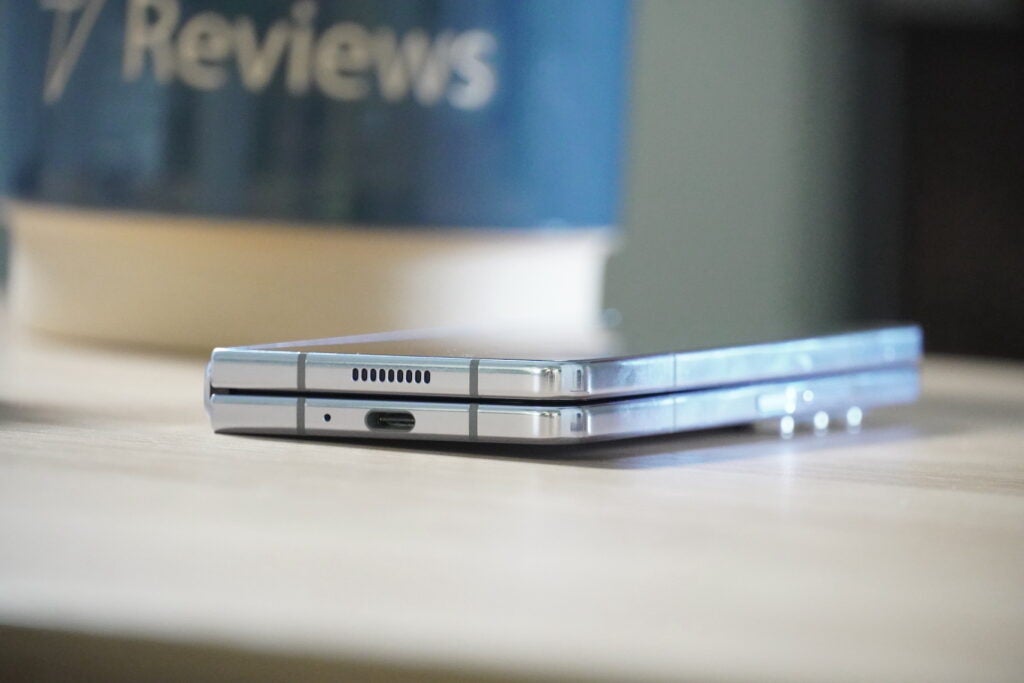
Regardless of how long it took to materialise, the new hinge system shifts the foldable’s look from ‘cool future tech with issues’ to ‘premium foldable flagship’, especially when combined with impressively slim bezels of the inner foldable display and premium materials used in the build, including Gorilla Glass Victus 2 protection for the outer glass panels.
Removing that awkward gap also allows for a slightly smaller overall footprint, with the Z Fold 5 measuring in at 13.4mm when folded, down by 2.4mm compared to the 15.8 mm-thick Z Fold 4.
That’s still thicker than Candybar flagship territory and is a way off both the Pixel Fold and Honor’s impossibly thin 9.9mm-thick Magic V2, but it does make the phone feel a little less chunky in the hand and pocket.
It’s also 10g lighter at 253g, and while this is still weightier than most Candybar phones, it didn’t feel too heavy during use – maybe my time with the absolute chonk that is the 283g Google Pixel Fold has given me a new perspective.
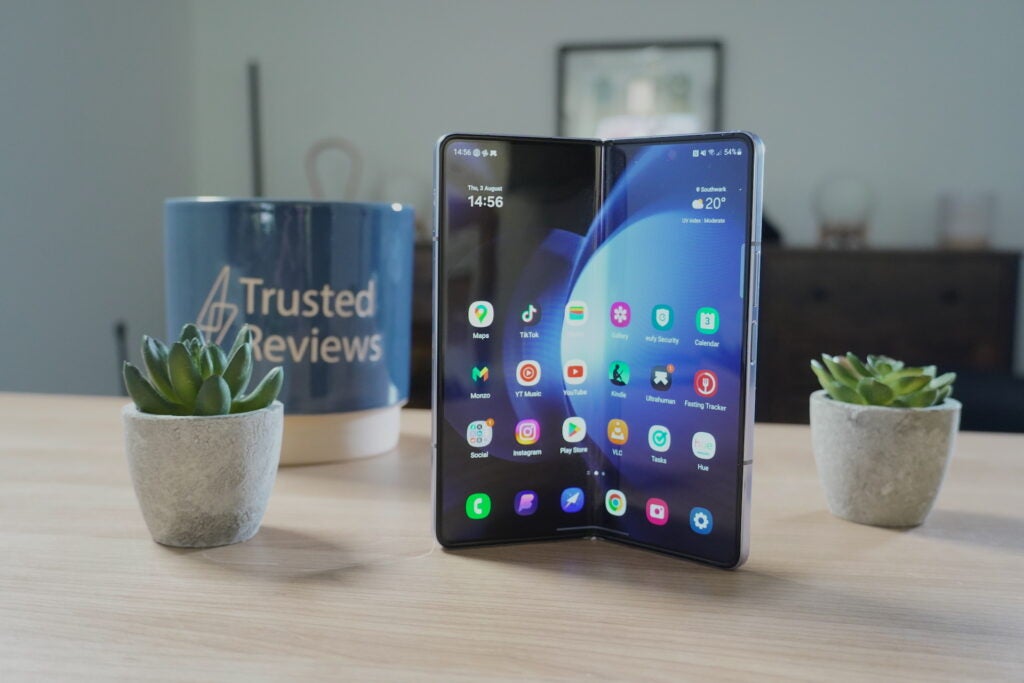
However, despite the gains made, the lightweight 231g Honor Magic V2 shows that the tides are changing quickly, and Samsung is at risk of being swept up in the deluge.
Expect a slightly different array of colour options this time around, ranging from the understated Phantom Black and Cream to a more colourful – but still fairly muted – Ice Blue. The latter Ice Blue finish is most intriguing to me as it seems to shift in colour depending on the colour of the light in your environment.
In cool blue light environments, like bright sunshine, the Z Fold 5 does indeed look pale blue, but take it somewhere with warmer light and that colour will shift to pale lavender. It’s so different that members of the Trusted Reviews team (myself included) were convinced that it was indeed lavender when it first arrived at the office.
It’s like the new black or gold dress fad, though I must say that this is unintentional – it’s not a feature Samsung highlighted, at least.
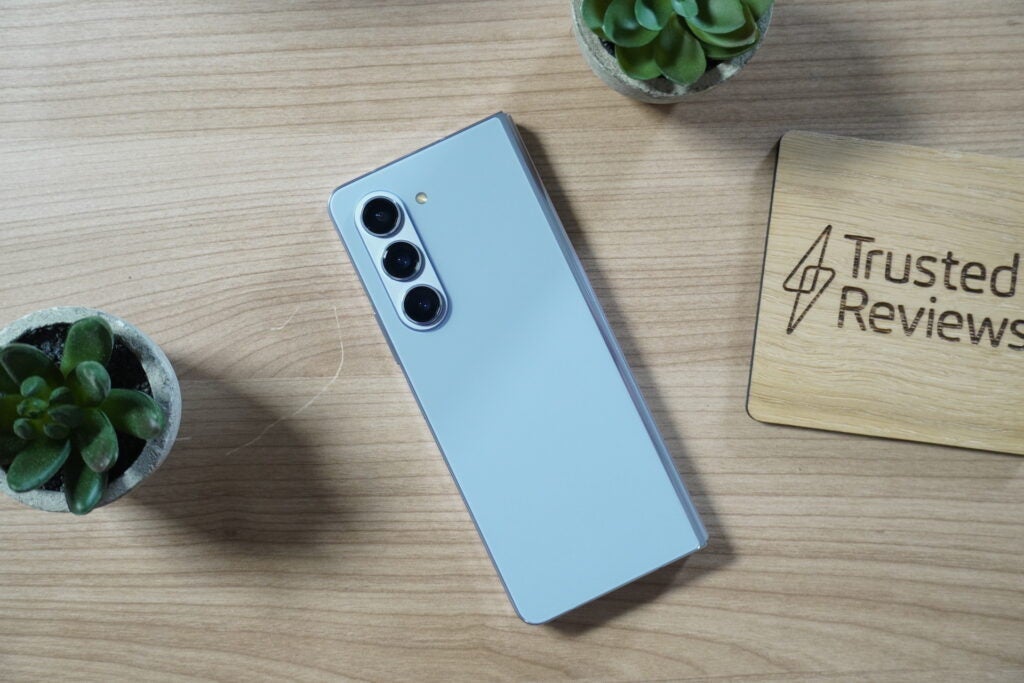
Aside from all that, it’s very much business as usual, with Samsung’s Galaxy Z Fold 5 sporting the same general form factor as its predecessor. It’s very much a year for refinement in Samsung’s books, though I wish there were more done to differentiate it from its predecessor, especially amidst increased competition.
Displays
- Tall-and-narrow 6.1-inch external display
- 7.6-inch boxy internal display
- Crease still visibly present
With the same overall design as its predecessor, it shouldn’t come as much of a shock to learn that it includes Samsung’s signature tall-and-narrow 6.1-inch 120Hz AMOLED external display and the larger 7.6-inch 120Hz AMOLED foldable display found within.
I’ve always thought the Samsung Z Fold’s outer display looked oddly tall and thin, and that’s an opinion I still hold with the Galaxy Z Fold 5.
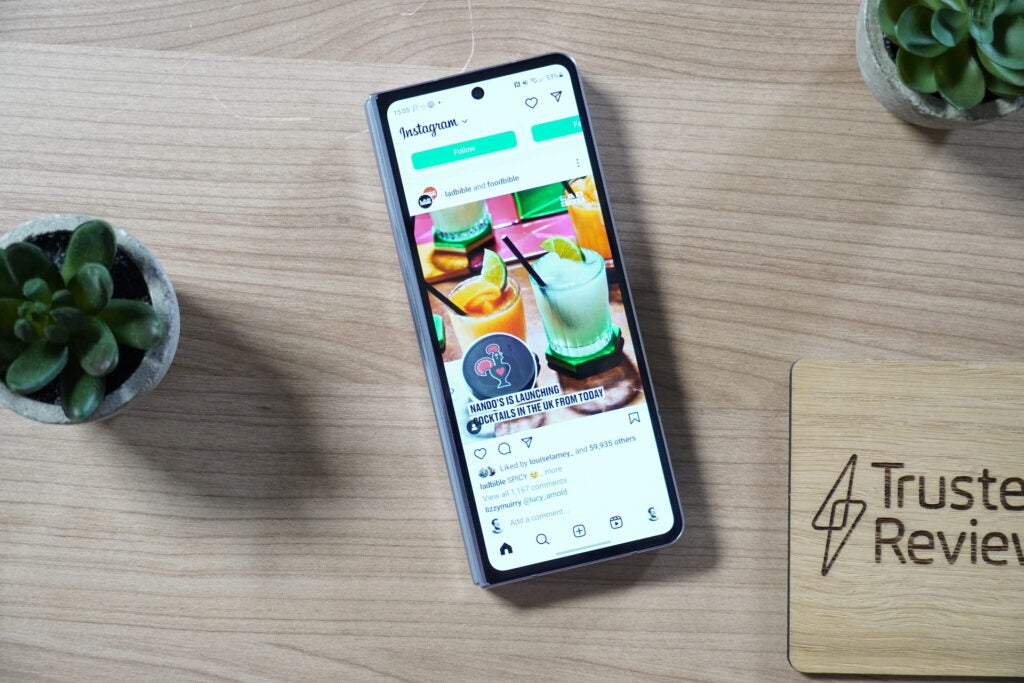
The oddly tall 23.1:9 aspect ratio provides a narrower display experience than most compact smartphones, and that takes some getting used to. Typing on a narrower keyboard, for example, took a while to adjust to, and the narrower display means images on Instagram and X (or whatever Elon’s calling it) look even more compact than intended.
It does the job of allowing you access to all of your apps without having to unfold the device, but it’s not a display I really enjoy using for more than replying to messages or checking directions on Google Maps – especially compared to squatter cover displays like that of the Google Pixel Fold.
The 7.6-inch inner display has seen a boost to overall brightness with 1750nits peak brightness matching that of the top-end Galaxy S23 Ultra, which is a real boon for outdoor viewing and watching HDR-compatible content. Combined with the OLED panel’s vibrant colours and deep, inky blacks, it’s an ideal display for watching video content.
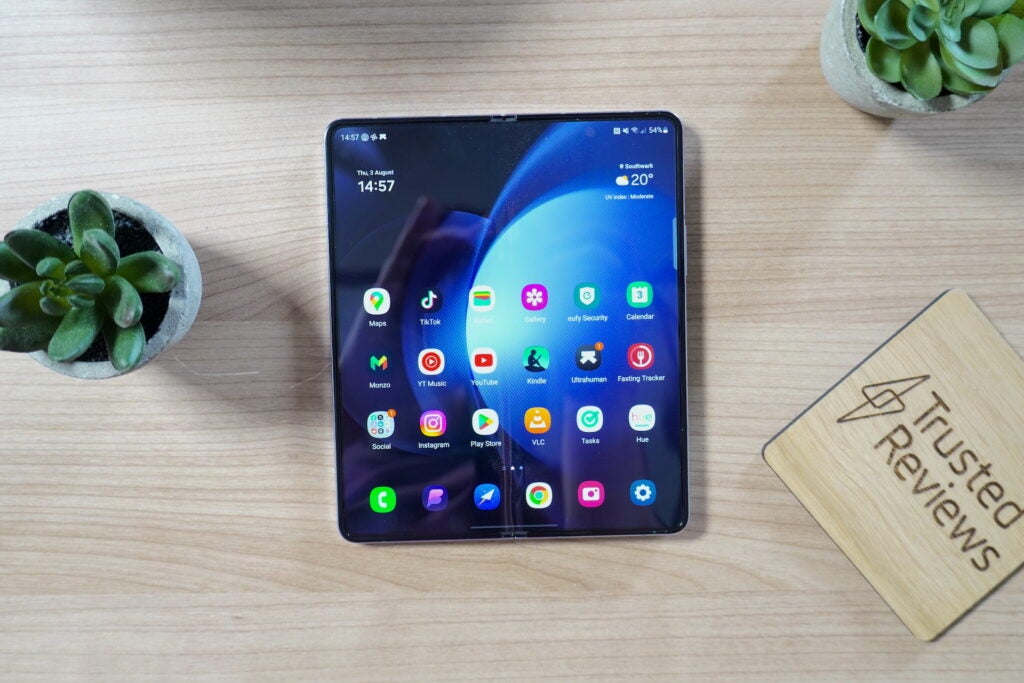
You’ll still get large black bars atop and below, but the video itself is still slightly larger than you’ll get from most big-screen candybar phones.
The larger display also allows for entirely new smartphone experiences. I’ve been using the Z Fold 5’s inner display to read eBooks on the Kindle app – something I’d never do with a standard candybar smartphone.
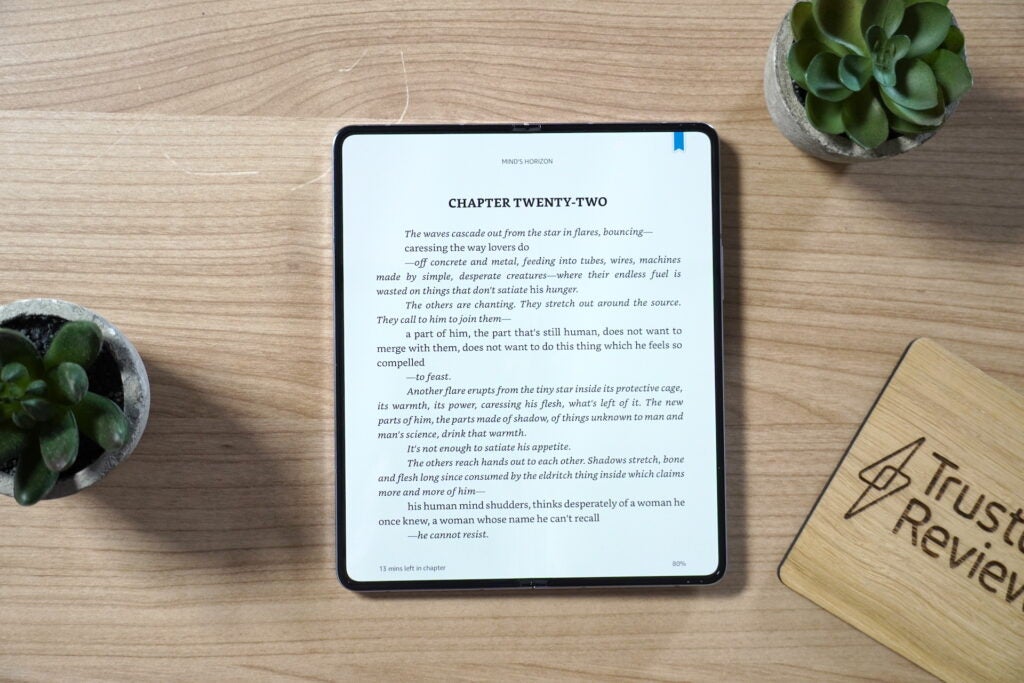
The boxy aspect ratio also lends itself well to split-screen multitasking, able to comfortably display two smartphone-sized apps side-by-side with room for a third floating window. Multitasking is still very much a niche, but it’s a handy feature for power users.
The big problem with the inner display remains to be the central crease. Despite the improved hinge mechanism, the reduction of the crease is best described as minimal. Sure, there are improvements when put side-by-side with the Z Fold 4, but it’s still very much a part of the experience.
Admittedly, as my week went on, I noticed the crease less and less – likely due to the fact I wouldn’t swipe my finger across it too often, unlike the horizontal crease of clamshell foldables – but it was immediately noticeable whenever I did.
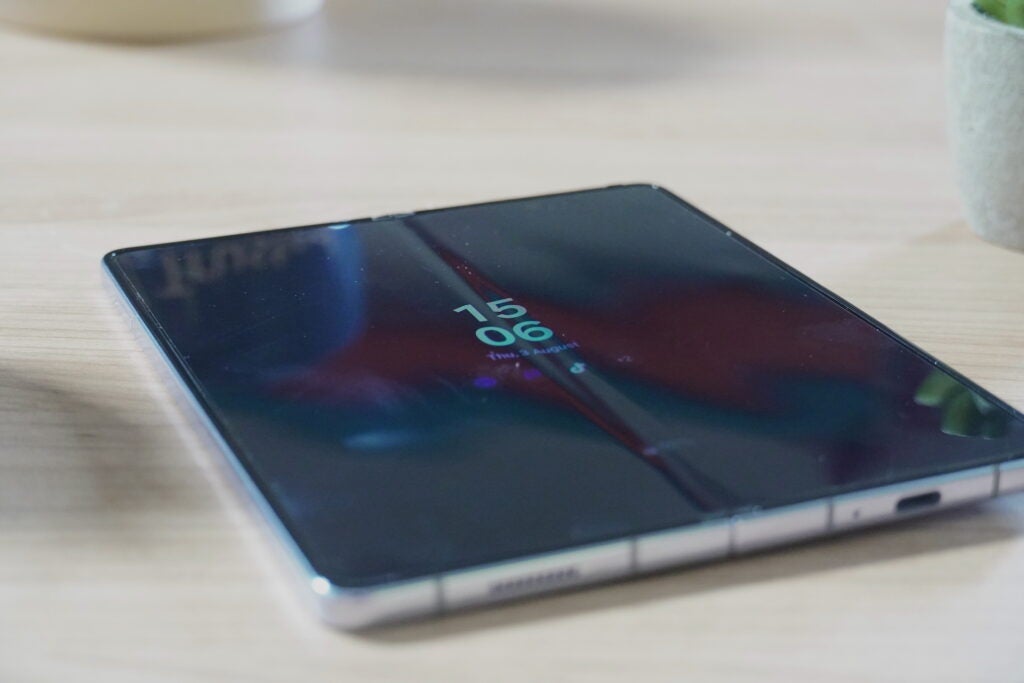
We’ll never eliminate the crease entirely (thanks, physics) but manufacturers like Huawei and Motorola have made strides in making the crease as shallow as possible, making Samsung’s foldable look a little behind the times.
To Samsung’s credit, it has attempted to make the Z Fold 5 as environmentally friendly as possible with various bits and pieces made from recycled ocean plastic. The box is also completely recyclable with no single-use plastic.
Cameras
- 50MP main camera
- 13MP ultrawide and 10MP 3x secondary lenses
- No different to Z Fold 4 hardware
It seems Samsung is confident of the Z Fold 4’s camera setup as, literally, nothing has changed when it comes to the Z Fold 5. The Samsung Z Fold 5 sports the same combination of a primary 50MP snapper with Dual Pixel AF and OIS, a 12MP ultrawide and a 10MP 3x telephoto lens with OIS, complete with identical sensors.
It’s a similar story with the selfie cameras; the 10MP sensor of the external 6.1-inch display remains unchanged, much like the (poor-performing) 4MP under-display camera within the larger 7.6-inch panel.
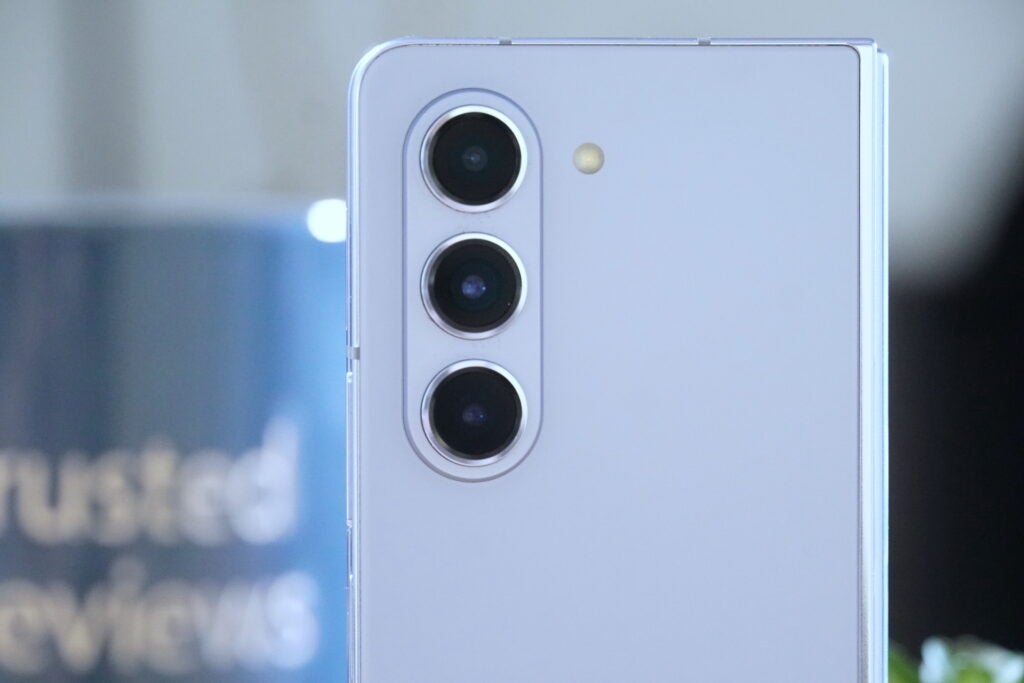
That’s an interesting approach in a year where we’ve seen impressive foldable cameras in the form of the Google Pixel Fold and Huawei Mate X3. That’s not to say that the cameras are bad – images are perfectly fine from the rear lenses – but it’s a shame not to see any innovation at all.
Images taken by the main 50MP snapper in bright, well-lit environments are detailed and vibrant with plenty of light. HDR performance is also generally impressive with balanced lighting, even with the midday sun directly in shots, though HDR performance in dimmer indoor environments can sometimes leave images looking a little over-processed.
Colours across all three lenses are vivid, if not a little too saturated, especially when it comes to reds, greens and blues, with shots of flowers and the sky sometimes bordering on the unnatural. The cameras are well-tuned at least, with the colour profile consistent across all three lenses.
Low-light performance from the main lens is serviceable, bringing out the light in lamp-lit streets and dusk dog walks, but it’s clear that software is doing much of the heavy lifting. It’s far from what you’ll find from flagships like the AI-infused Google Pixel 7 Pro or the Xiaomi 13 Pro and its 1-inch sensor, which deliver more accurate colours, light, and detail.
The accompanying 12MP 123-degree ultrawide lens is great for taking expansive shots or wide group selfies with little distortion around the edges of images captured, but without pixel binning tech to play with, images look a little less detailed when zooming in.
The 10MP 3x optical lens is handy for taking close-up portrait shots with a tighter angle than that of the main lens, but there’s a drop in overall quality as light levels drop compared to the other lenses.
The 30x Space Zoom is also a bit of a gimmick, with much less detailed results than what you’ll get from the S23 Ultra at the same level of zoom.
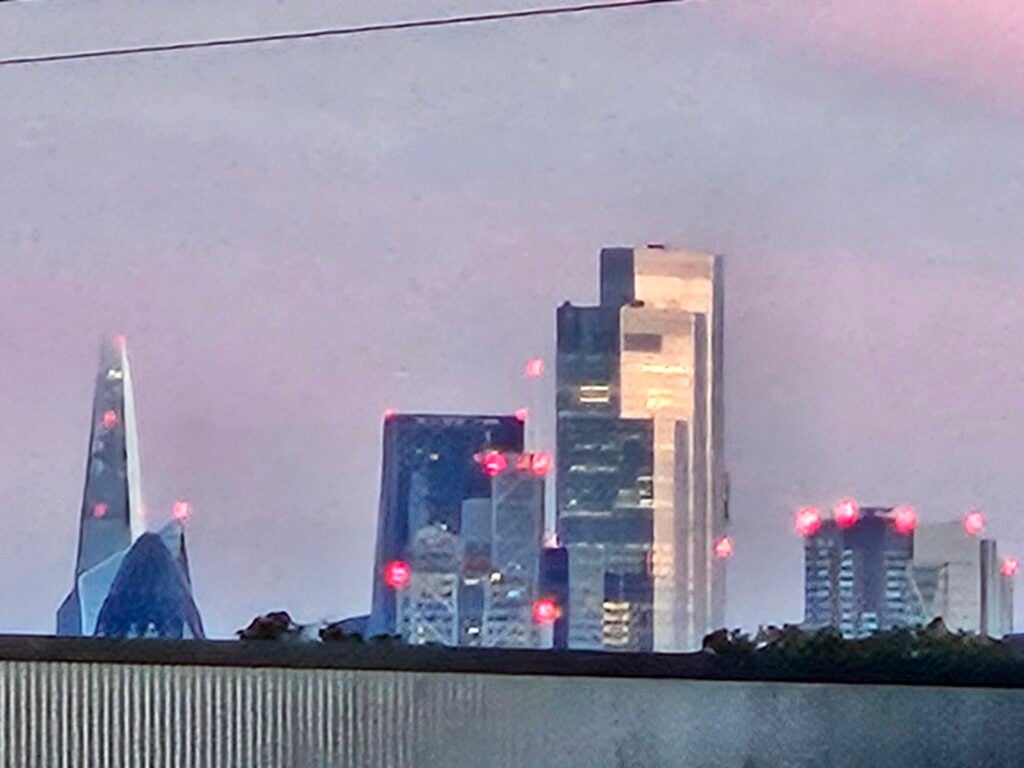
Video caps out at 4K@60fps, capturing plenty of light and detail to make it adequate for filming Instagram Stories and TikTok dances, and steady stabilisation means you won’t notice much wobble if recording and walking at the same time. It’s not the very best video tech available, lacking the snazzy pro features like Dolby Vision HDR capture, but it’ll be fine for most casual users.
Performance
- Snapdragon 8 Gen 2 for Galaxy power
- Rapid everyday performance
- Up to 1TB of storage
At the heart of the Samsung Galaxy Z Fold 5, you’ll find the same custom version of the Snapdragon 8 Gen 2 found in the Galaxy S23 series.
Dubbed the Snapdragon 8 Gen 2 for Galaxy, the chipset boasts a higher CPU clock and an additional GPU core compared to the regular 8 Gen 2 found in most other flagships, which gives the Z Fold 5 an edge over most of the competition – foldable or not.
That’s coupled with 12GB of LPDDR5X RAM and either 256GB, 512GB or 1TB of UFS 4.0 storage to play with – though it’s worth noting that the top-end 1TB model is exclusively available from Samsung directly.
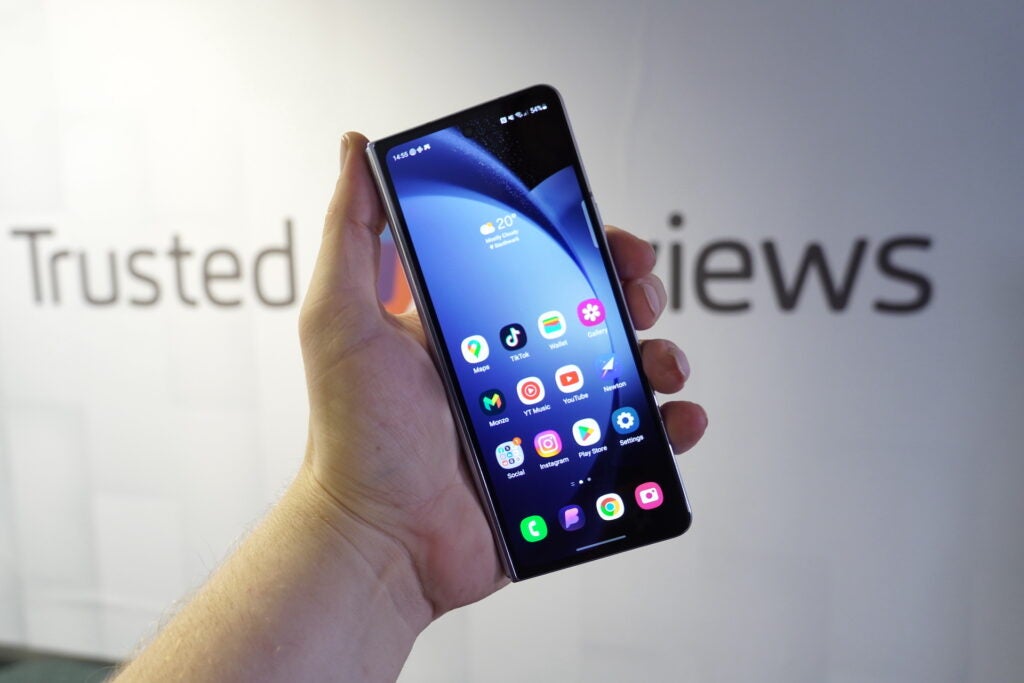
Unsurprisingly, the Z Fold 5 felt rapid and responsive during my time with the device, instantly opening any app I tapped on, running two apps on-screen without issue and image capture was near-instantaneous too.
Gaming is also an absolute delight on the large internal display once you adjust to the boxier aspect ratio on offer. It could run games like World of Tanks at a smooth 60fps, with every optional graphical option enabled. I noticed the rear getting a little hot after around 45 minutes of sustained gameplay, but I didn’t see much of a knock-on effect on the performance.
It’s certainly not lacking in power, then, and my benchmark results back that up. The CPU, in particular, seems to be one of the most powerful around, even compared to standard flagship smartphones. GPU tests aren’t quite as capable on paper, but it’s worth noting that the internal display runs at a higher resolution 2176 x 1812 when compared to the candybar competition. More pixels mean more power, after all.
Realistically, you’re going to get top-level performance that’ll likely keep the phone snappy over multiple years of use, even with increased performance requirements from apps and OS functions as tech advances.
Audio performance is also solid, delivered by stereo speakers atop and below the display, with enough volume to comfortably watch TikTok or listen to a bit of music while you cook your dinner. Dolby Atmos support is also present to further improve audio immersion, though this is really only notable when wearing headphones. The effect on actual speaker output is minimal.
Software
- Android 13 with Samsung OneUI 5.1
- Plenty of foldable-focused software features
- Samsung leads the way with third-party app support
When it comes to software, you should expect much of the same as the Galaxy Z Fold 4. Though the phone runs Android 13 with Samsung’s OneUI 5.1 applied, it’s not that different to its predecessor, with only minor improvements to the overall software experience.
One of the significant features was the ability to use Bixby to reply to incoming calls via text, which should tell you all you need to know about how little has changed here.
That said, it still offers a relatively polished foldable experience with an iPad-esque toolbar on the inner display providing quick access to favourite and recently used apps. I also continue to enjoy Flex Mode, Samsung’s tech that dynamically adjusts the layout of apps like Camera and YouTube when used in its half-folded laptop-esque mode.
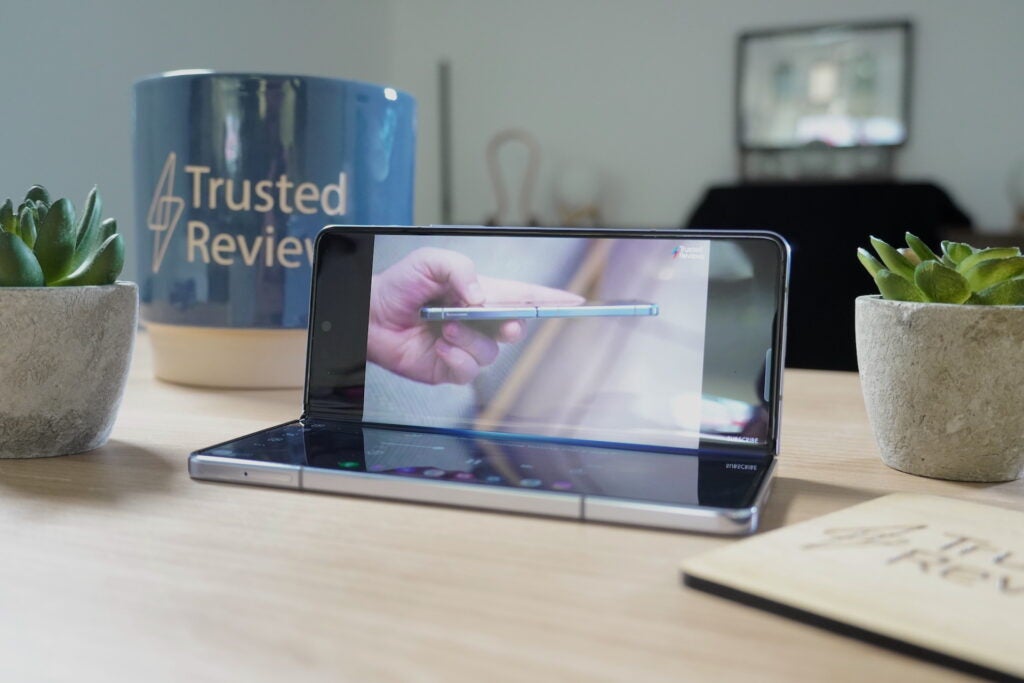
What has changed considerably since I played with the Z Fold 4 in 2022 is app support. While the 2022 experience was hit-and-miss, with most apps forced to run in fullscreen mode rather than natively supporting the boxy aspect ratio, that’s not the case in 2023.
Popular apps like Instagram, Facebook, Twitter, WhatsApp, Spotify and more all provide dedicated layouts for the boxy internal display, allowing me to use the inner display far more often without any kind of compromise.
It’s a game-changer as most foldables, including the Pixel Fold, still can’t run most third-party apps in fullscreen mode on the inner display. It’s not a complete collection, with some apps still feeling more like blown-up smartphone apps than apps designed for the display, but it’s a step in the right direction.
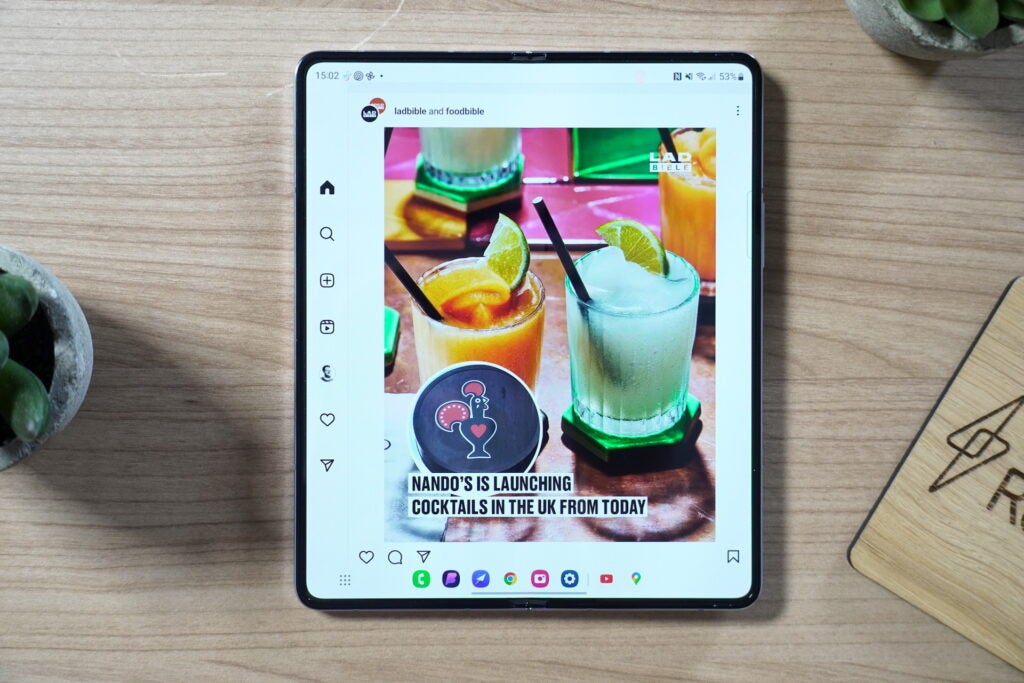
Of course, this isn’t exclusive to the Z Fold 5 – support for the aspect ratio means apps will run just as well on older models of Z Fold – but Samsung has to be commended for its effort in encouraging developers to adopt support.
I’ve also leaned more into split-screen multitasking more than I thought I would – tasks like sending photos to friends on WhatsApp is easier when I can drag and drop directly from the Gallery app, and being able to input my benchmark results onto my Google Spreadsheet without constantly switching between apps was also very handy.
The big screen experience is well suited to split-screen use, more so than any candybar phone I’ve used, with enough space for a third pop-up window if necessary. That much might be overkill, but it continues to be a handy feature for true power users.
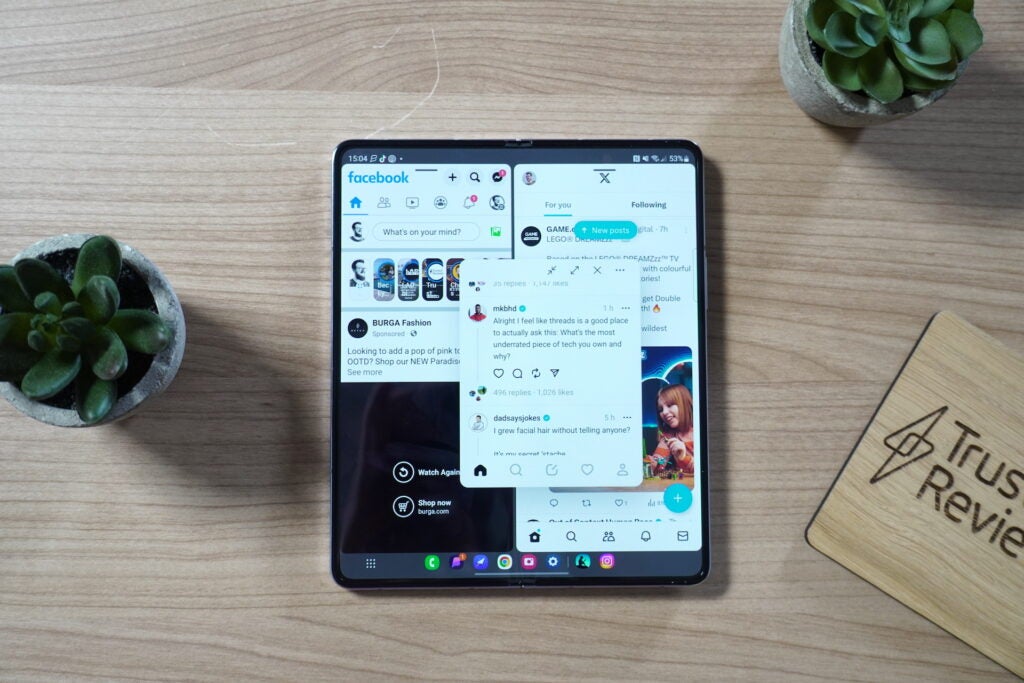
The good news is that there is plenty of opportunity for Samsung to continue to improve the software experience with a promised five years of security updates and four OS upgrades taking you through to Android 17, the longest guarantee of any book-style foldable right now.
Battery life
- Same 4,400mAh battery as its predecessor
- Can just about last all-day
- 25W charging is fine but not exceptional
With the Samsung Galaxy Z Fold 5 sporting the same 4,400mAh battery as its predecessor, it should come as no surprise that battery life is comparable. That is to say that it’s pretty decent, even with increased usage on the internal display with more app support this year, though it’s still not quite up to the standards set by candybar phones like the Xiaomi 13 Pro that seemingly keep on going.
In terms of specifics, I’d usually manage to squeeze around five hours of screen-on time over a 16-hour day with between 15 – 20% left in the tank. That includes texts and WhatsApps throughout the day, scrolling through TikTok and Instagram, listening to music, snapping the occasional photo and reading an eBook on the Kindle app during my commute.
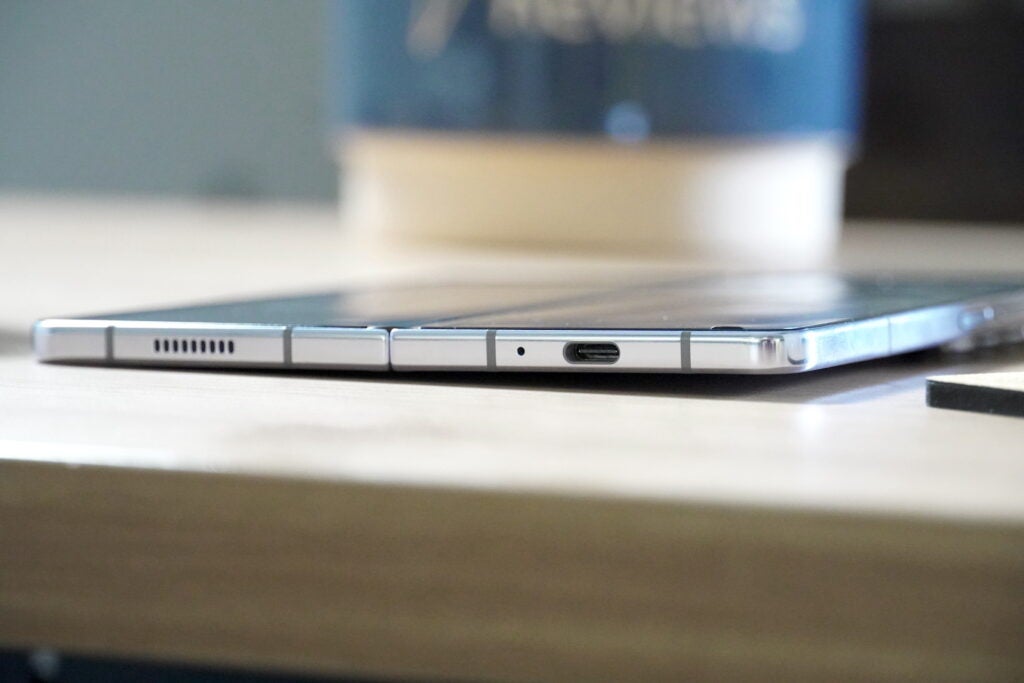
It’s commendable, especially given my increased usage of the more power-hungry internal display, but it’s still a device you’ll need to charge every night. Only the most light users would see anything close to two days out of this device.
I was hoping for a boost to charge speeds from the Z Fold 5, but it instead sports the same 25W charging as its predecessor. It’s not exactly slow – it reached 50% in 32 minutes with a full charge in just over an hour and 20 minutes – but when some candybar smartphones achieve a full charge in 20 minutes, it’s clear that Samsung could do more.
Like most other Samsung phones in 2023, it also doesn’t come with a charger in the box. Given the price tag, it would’ve at least been nice for Samsung to give you the option for a charger if you don’t have one handy, but at least 25W chargers are pretty cheap on Amazon…
Should you buy it?
You want to use the foldable display to its fullest: Samsung’s exceptional push to get developers to integrate support for the boxy inner display shines through, with plenty of apps not available on the likes of the Pixel Fold.
You want the best photography experience: Boasting the same camera tech as the Z Fold 4, the foldable delivers fine (but not particularly exceptional) images, especially compared to the Google Pixel Fold.
Final Thoughts
The Samsung Galaxy Z Fold 5 is so similar to its predecessor that you’d struggle to tell the difference without the improved hinge removing the annoying gap.
And that’s because most specs, from the general design to the displays to cameras and even the battery, are the same as its predecessor, making the fact it costs £100/$150 more at £1749/$1799 a hard pill to swallow.
Sure, a slightly lighter, slimmer design and Snapdragon 8 Gen 2 power are excellent additions to an already premium foldable, but I’m not sure it’s worth that much more, especially in a more crowded foldable market with cheaper options like the Honor Magic Vs available.
It’s true that Samsung has made serious waves with third-party app support, which means I’ve taken more advantage of that inner display than ever before, but that’s not exclusive to the latest foldable – it’ll benefit all recent generations of Z Fold with the 7.6-inch display.
Still, it’s among the most well-polished book-style foldables you’ll find in 2023, maintaining its position as a go-to option – though with very little effort from Samsung.
However, you could probably save yourself quite a bit by opting for the year-old Galaxy Z Fold 4 while still taking advantage of improved app support and the same cameras, battery life and displays as the new model as long as you can put up with the gap in the fold. To see how it compares to the competition, take a look at our selection of the best foldable phones.
FAQs
Yes, an IPX8 rating means it’s resistant to water damage.
Despite support for 25W fast charging, there isn’t a charging brick included in the box.
Jargon buster
IP rating
An abbreviation for ‘Ingress Protection Code’, which lets you know to what extent a device might be waterproof or dustproof.
mAh
An abbreviation for milliampere-hour and a way to express the capacity of batteries, especially smaller ones in phones. In most cases the higher the mAh, the longer the battery will last but this isn’t always the case.
OLED
Organic Light Emitting Diode is panel technology that allows each individual pixel to produce light rather than relying on a backlight. This enables the screen to accurately display blacks by turning off the pixel, resulting in improved contrast compared to conventional LCD panels.
















